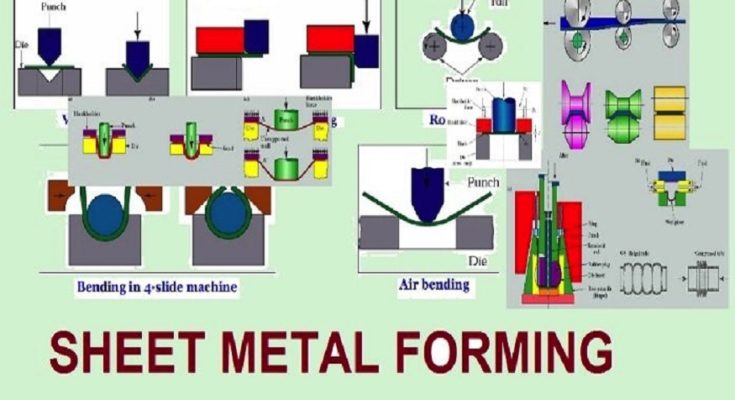Metals go through some tough process to come out with the perfect shape. It is not that easy for a metal to be formed into a certain form or shape. There are a lot of processes involved in the formation of metal. At metal forming Dallas a lot goes on. There is a lot of need to know how the metals are formed and the processes involved. Let’s go through some of the processes involved in metal forming.
Cold Working vs. Hot Working
For metals to be formed they pass through these two processes. Hot-working involves very high temperatures of above 60%. On the other hand, cold working works below 60% temperature.
Read more: 5 Major Mobile Home Repairs You Can Do Yourself
In a hot-working process, the aim is to melt the metal for reshaping. And it makes the metal less hard and more ductile. Cold working is mostly performed below room temperatures for the metals.
Manufacturing Processes of Metal Formation
Most methods of forming are done at either cold or hot temperatures. This will depend on the effects that will be needed.
Bulk Metal forming Types
Rolling
At this stage metals are sent past some set of rollers. These rollers are set for the deformation of the original stock and mold it into the required shape. Strips, rails, sheets, and other similar shapes can be also produced by rolling. This method is known for producing repeatable tolerances, tight and high strength metal.
Forging
This method is used for the shaping of metal stock. This is made possible by using some compressing devices such as hammers and presses.
Extrusion
This process uses force to pass the metal stock through a die to emerge as a tube.
Casting
In this process molten metal is poured into a mold or die.
Drawing
This may look like extrusion though there is a little difference. The work-piece is pulled during drawing past not pushed past the die like in the extrusion.
Sheet Metal Forming
This involves using forms of metals with a high surface area. Metal forms that are mostly used include sheeting and plates to form products. The types of sheet metal forming are discussed below.
Deep Drawing
Here the sheet or plate is drawn into the desired shape. This method is best for products that are very complex, especially geometry products.
Bending
Metal is reshaped using this method. Less residual stress is provided by bending than using roll forming.
Stamping
Indentations are created by the use of a press. This method is best for high volumes. This method produces consistent products without differences.
Metal Forming Tools
Every product is produced using specific tools and this is the case with metal forming. There are certain tools used in the formation of tools. The most basic tools include:
Presses
Presses are used to create stamping. They crush a metal between a bottom and top to shape it. They come in hydraulic, pneumatic, and mechanical types.
Benders
These come in different forms depending on the metal can either be a bulk or sheet material. In machine and manual types, there is bending equipment.
Roll Forming Machinery
By running a metal between two rollers this machine thins and flattens the metal. It often curls the metal into coils.
Read more: 3 Benefits of Custom Sheet Metal WorkDies
These are used to shape the raw materials. They can also be used in extrusion and drawing. This is done by pushing or pulling the metal past the dies.
Extruders
Shapes and strengthens the metal by using it through dies. In extruding the metal, extruders can use hydrostatic, direct, indirect, impact, or lateral methods during the drawing process.
If you never knew what goes on during metal formation like in the metal forming Dallas now you know. That is what goes on for a metal to be formed




